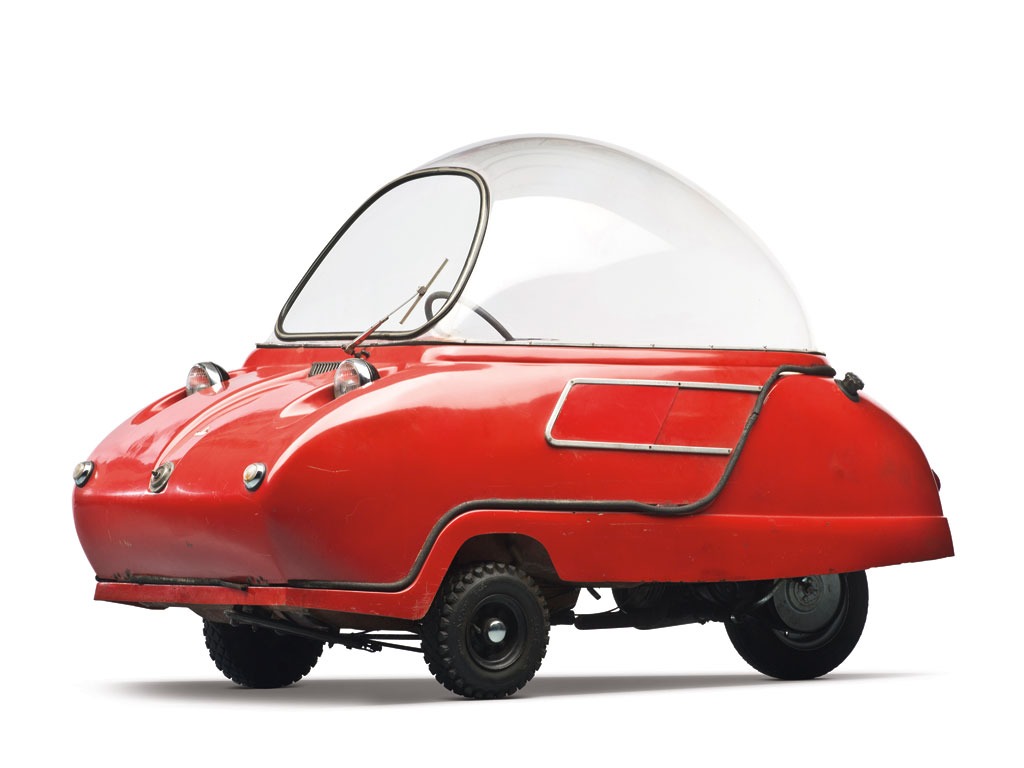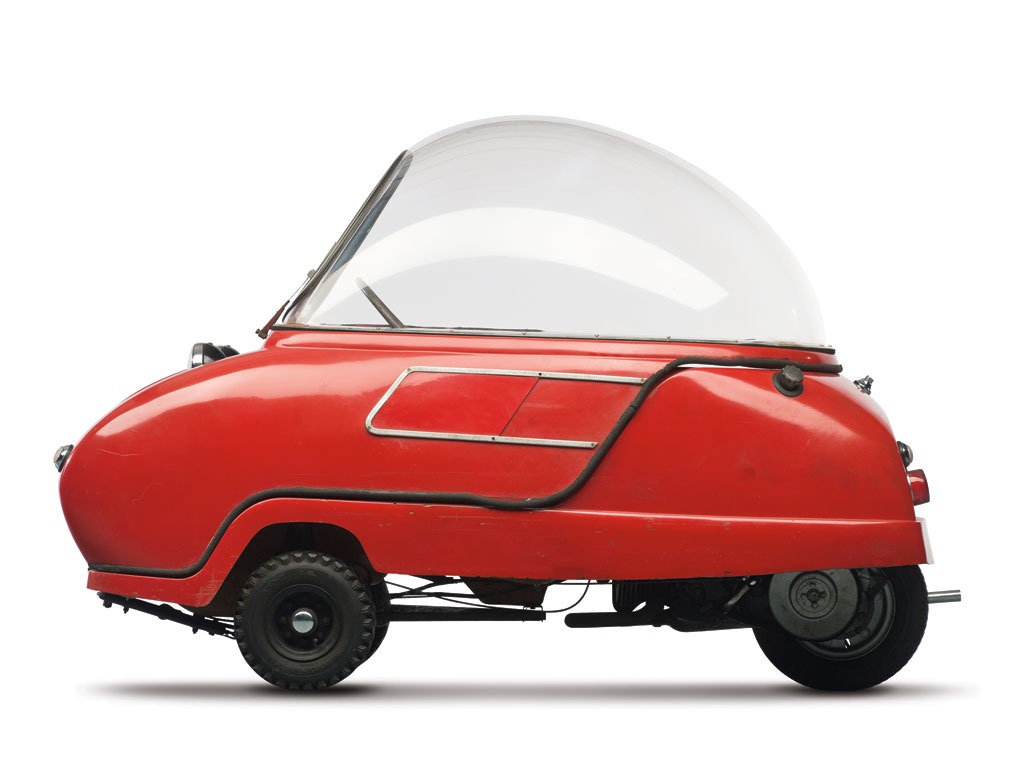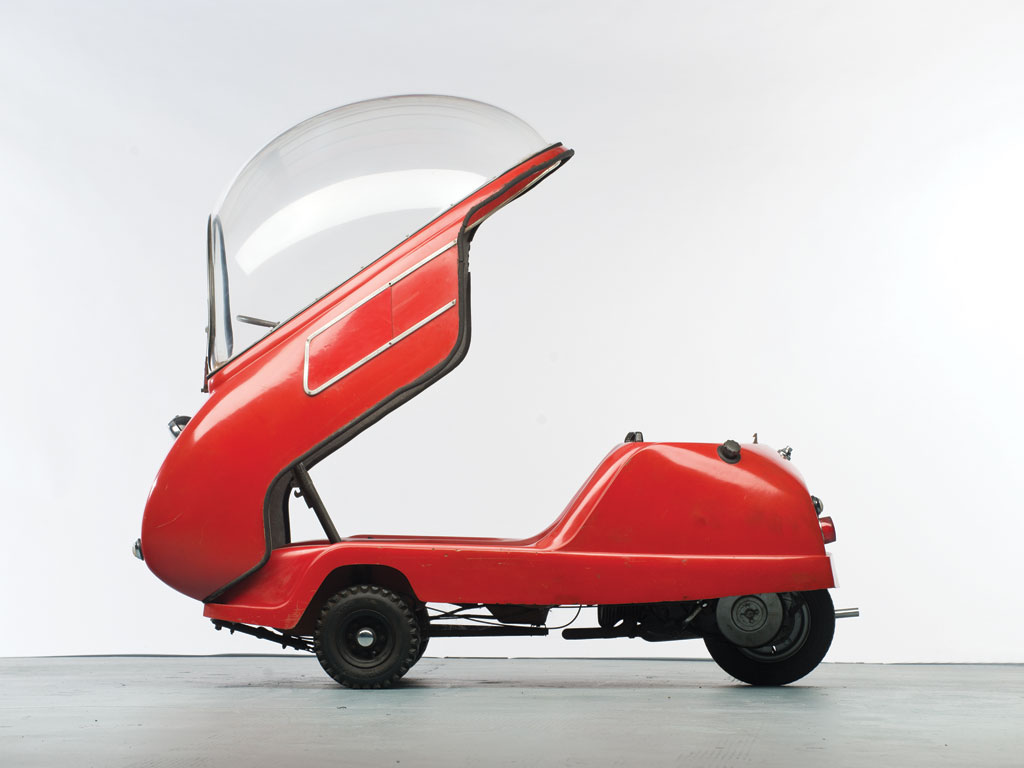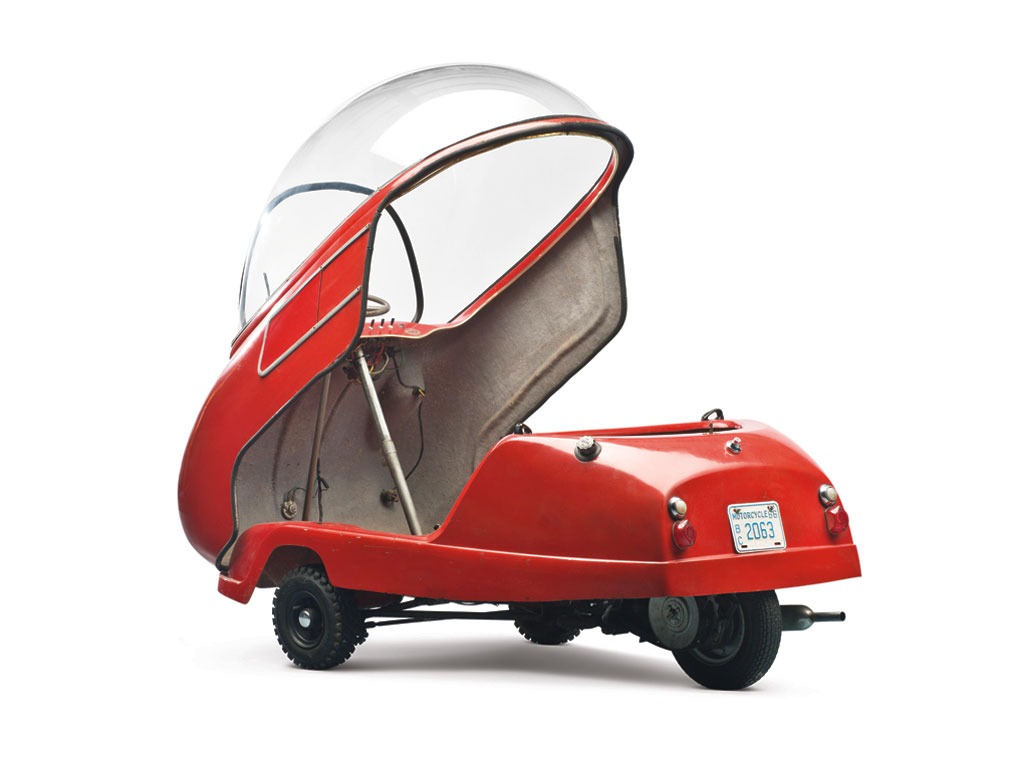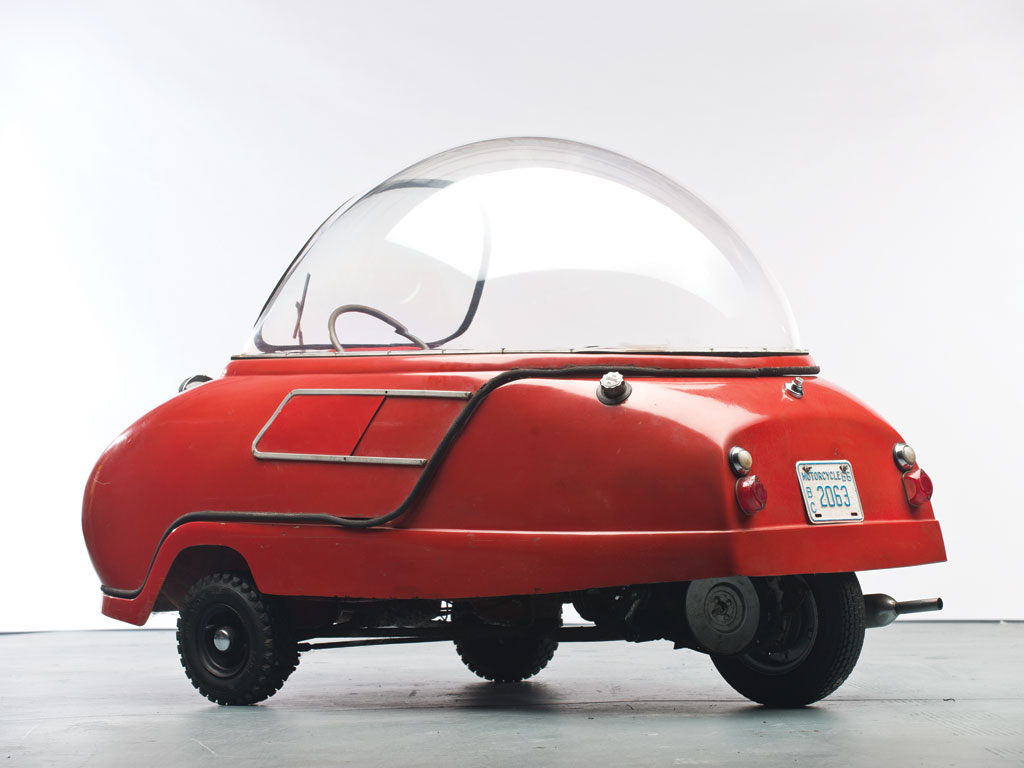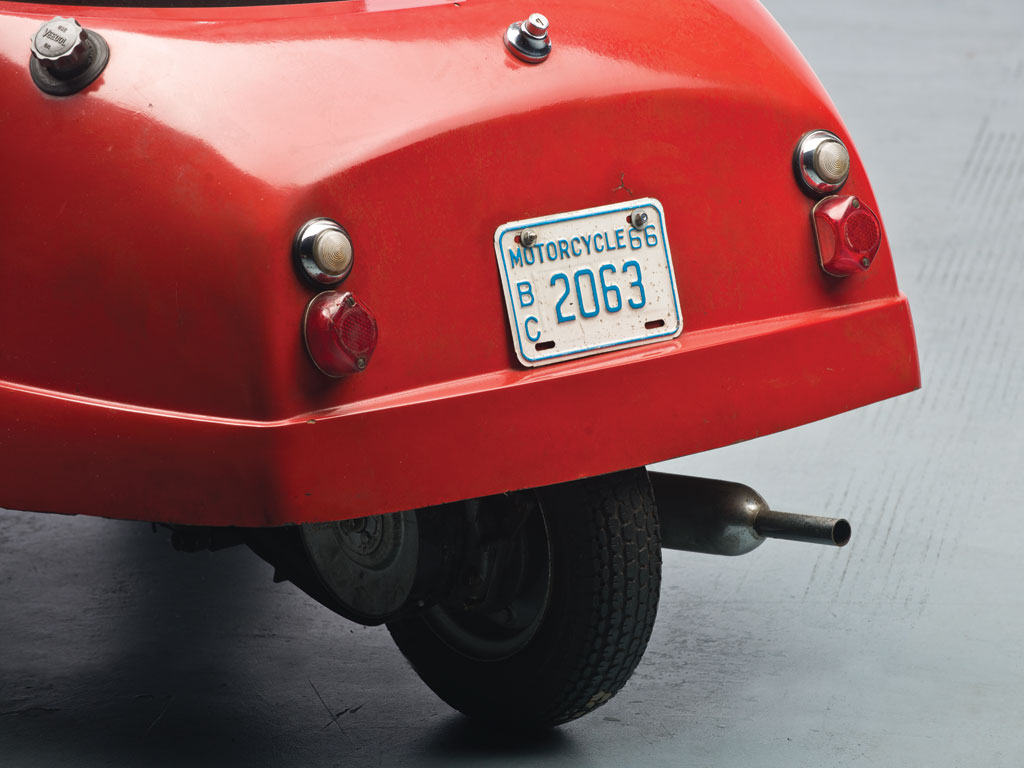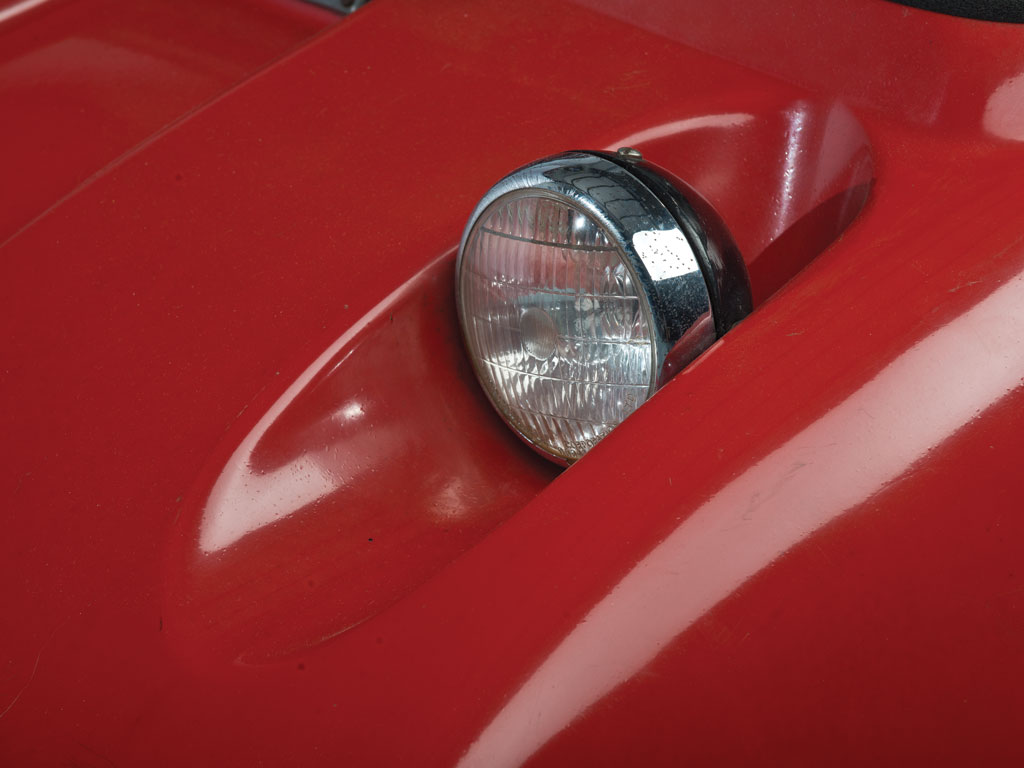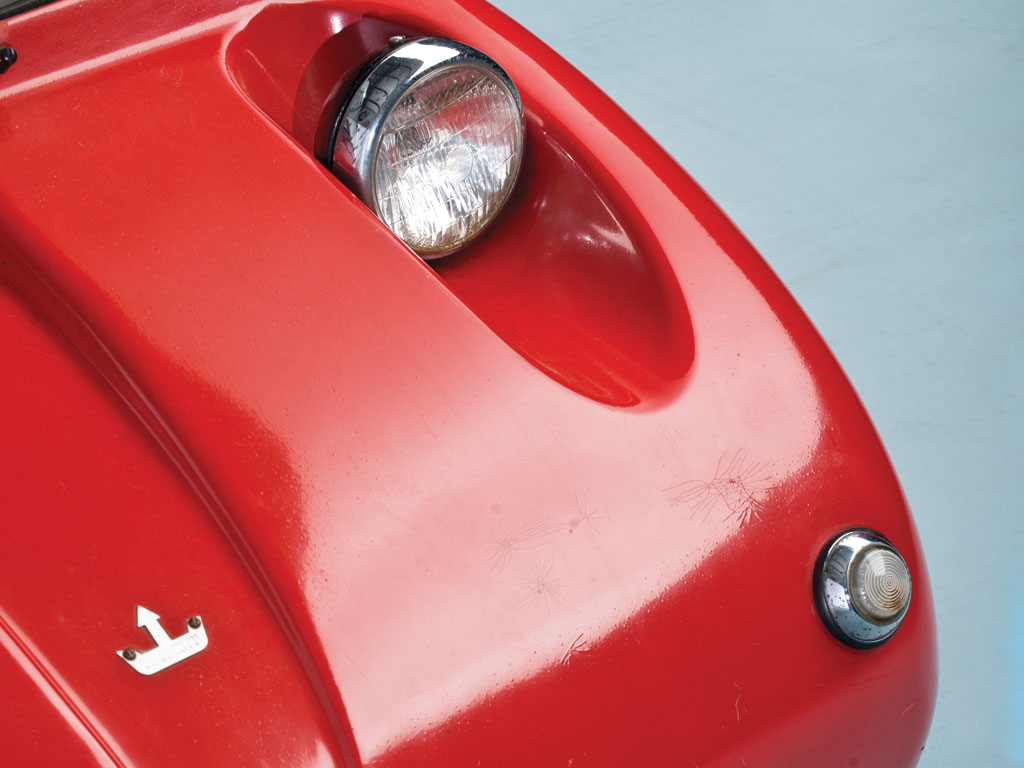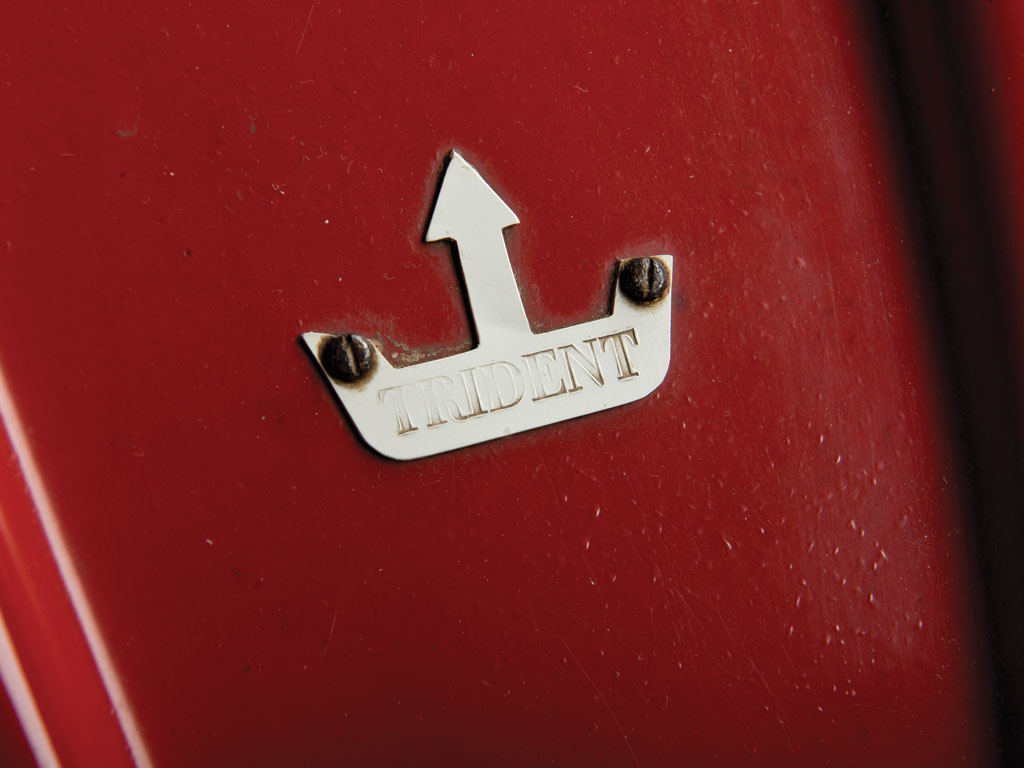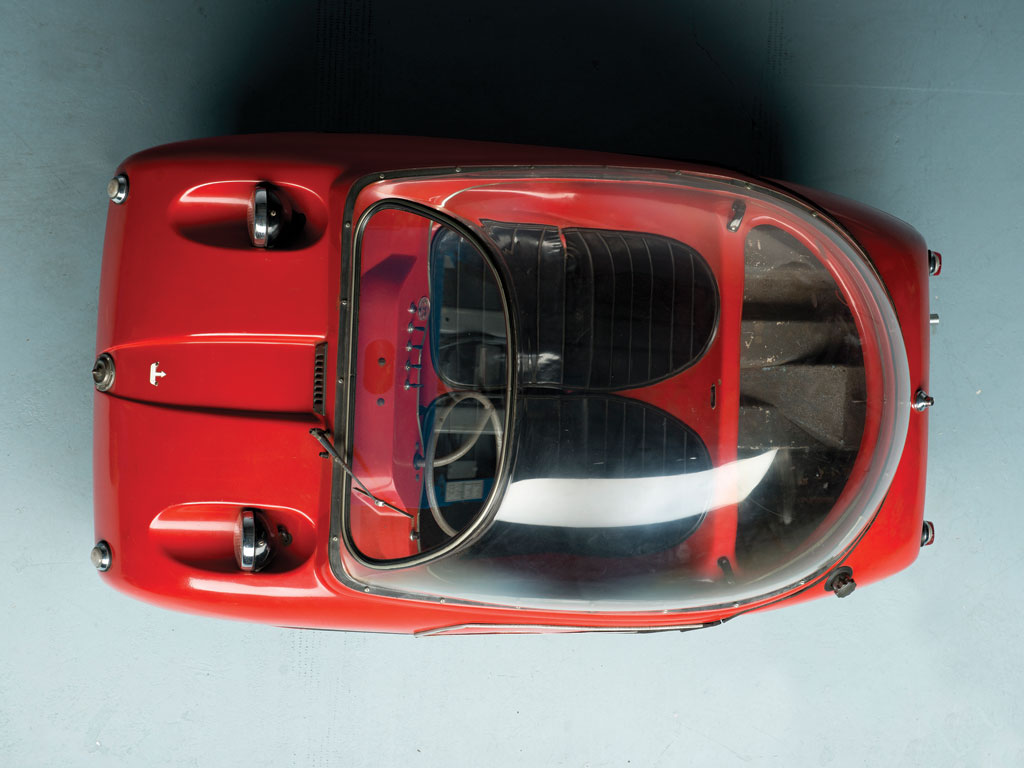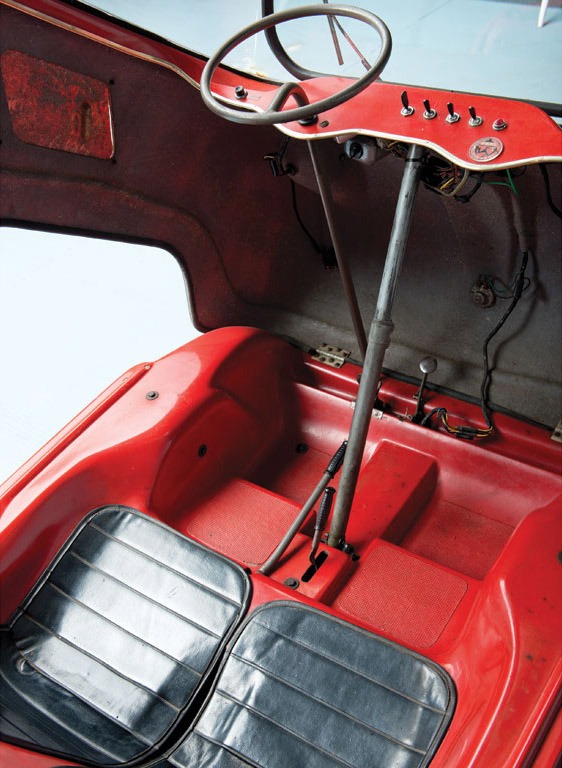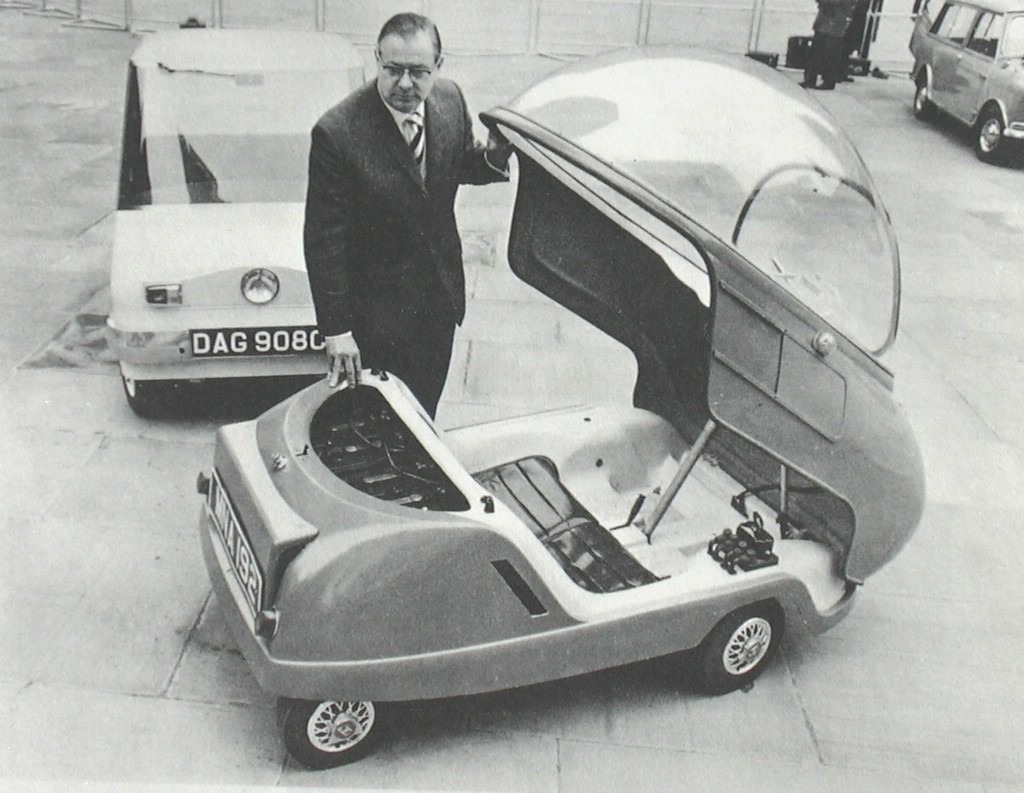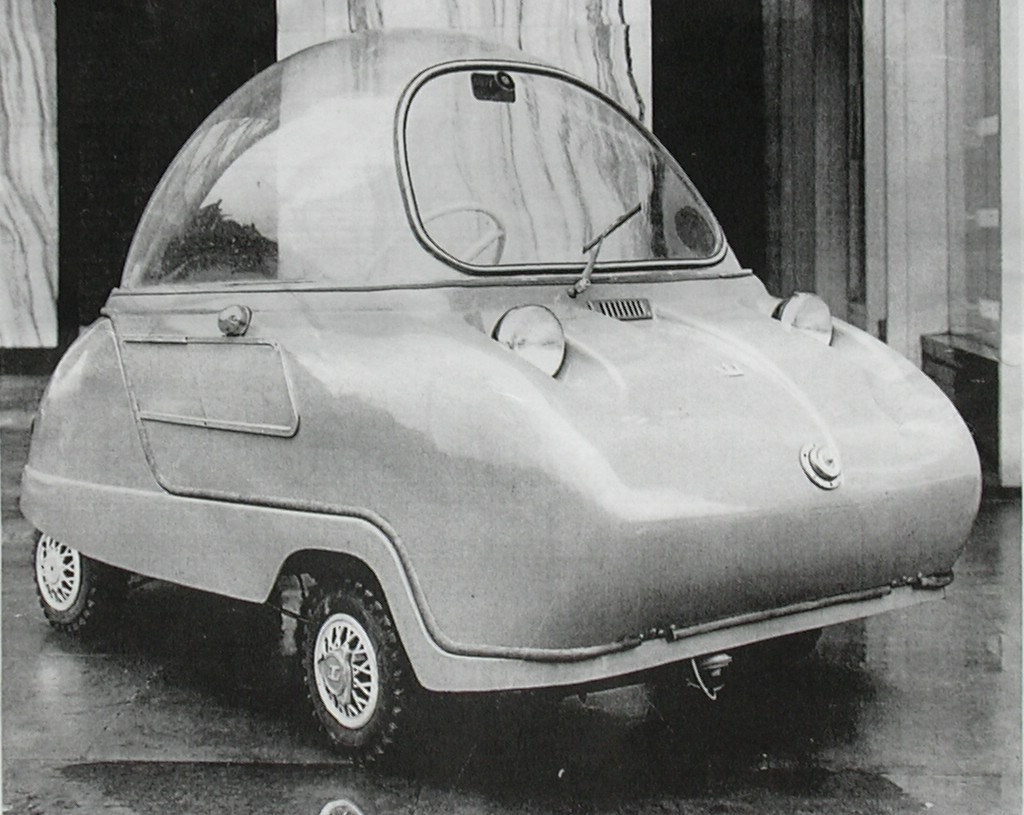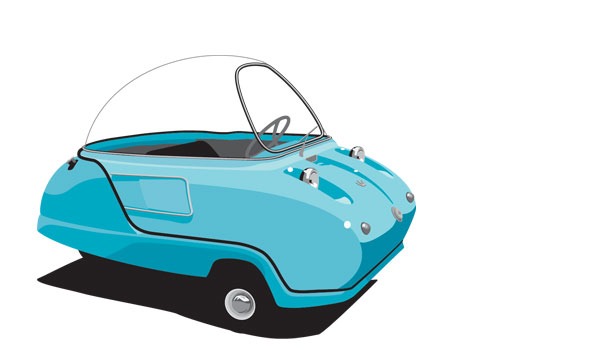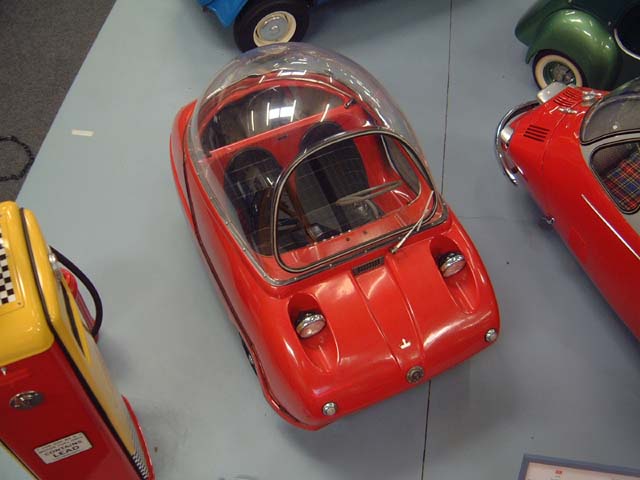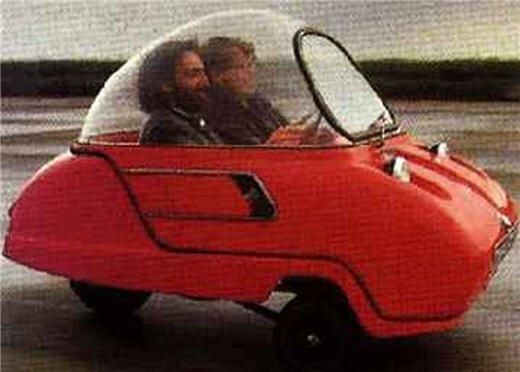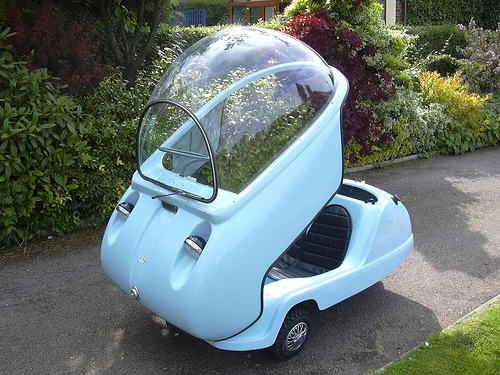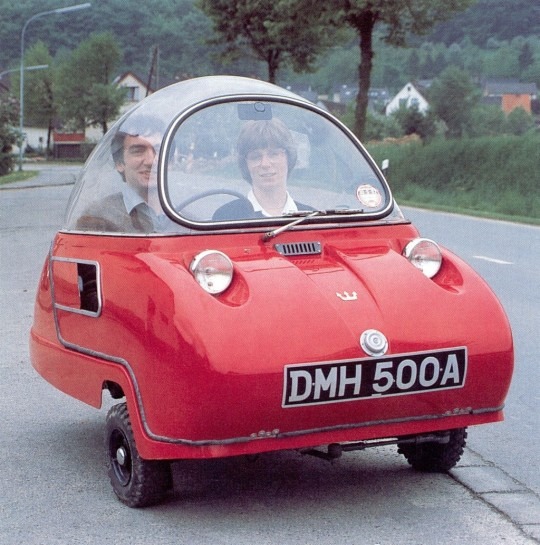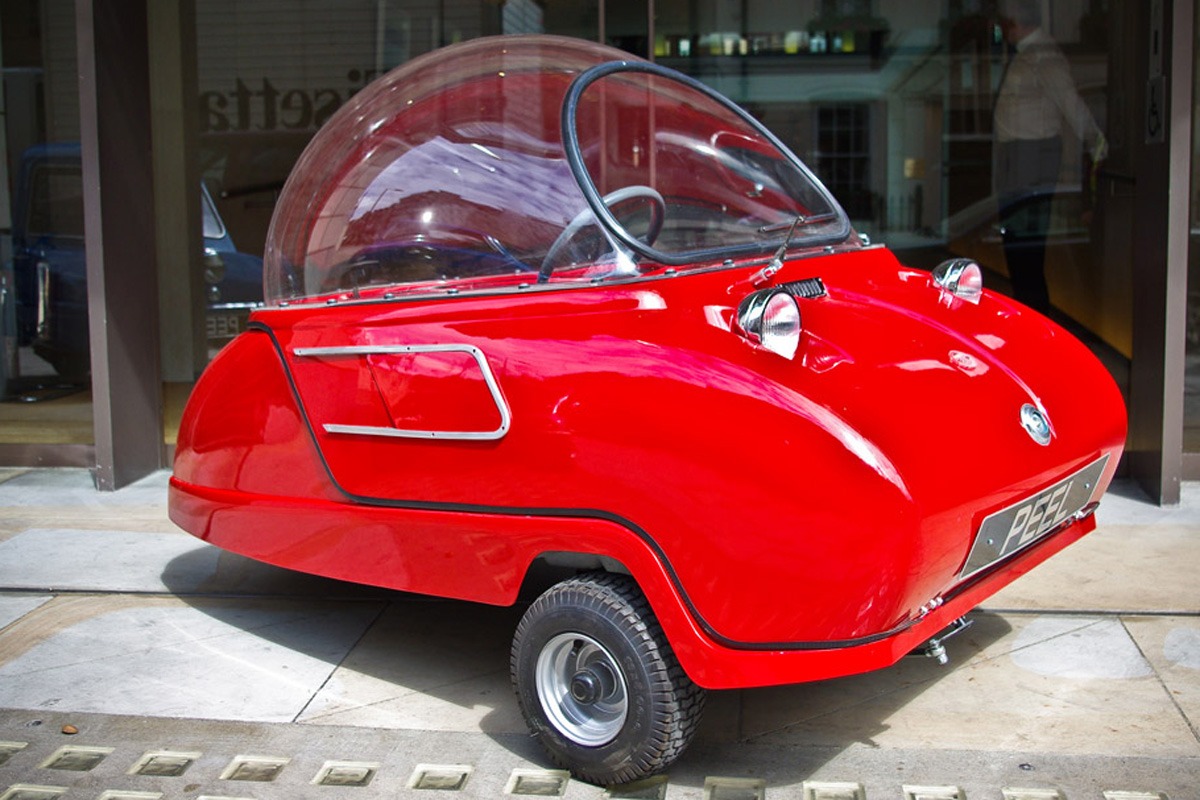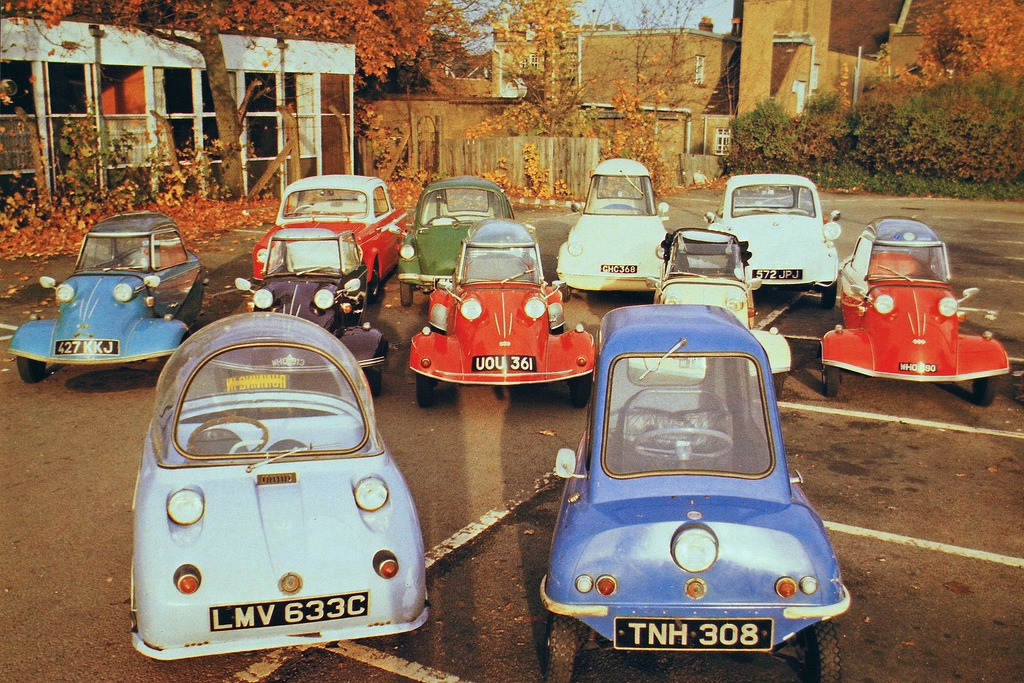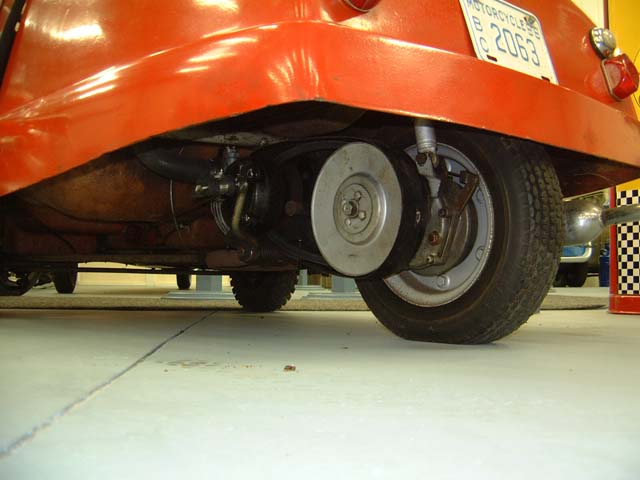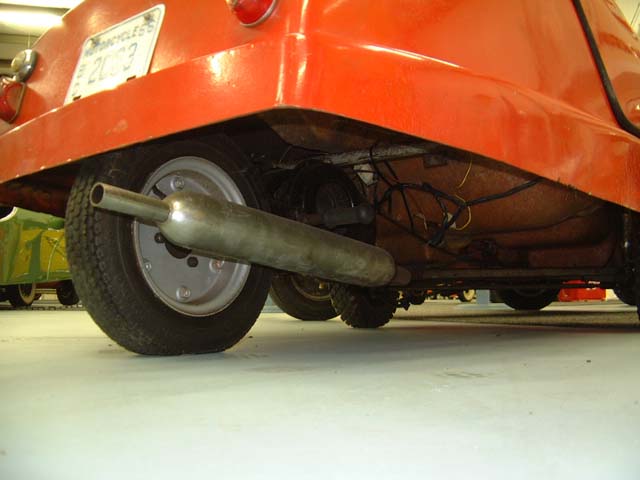The Isle of Man, located between England and Ireland, was home to the Peel Engineering company which produced the only car ever to originate from there. This small company provided the microcar world with some stimulating ideas, still discussed decades later. Originally producing motorcycle fairings and boat hulls it also produced car body kits in the 1950’s.
The famous P-50 was introduced in 1962 as the world’s smallest passenger car. The tiny 4’2″ long car amounted to a chair on go-kart wheels surrounded by a close-fitting angular fiberglass body. Powered (using the term loosely) by a 49 cc Zweirad Union (DKW) moped motor underneath the driver, it generated more noise than power. At an advertised 100 miles per gallon, it was “almost cheaper than walking”. A contemporary road test joked that the top speed was dependent upon the size of the steak that the driver had for dinner.
1964 saw the introduction of a further development of the P-50, called the Peel Trident. This was essentially the same chassis but with a slightly larger futuristic 2-seater body shell, topped by a large clear plastic dome which lifted for entry. Perhaps 45 were built, the last six of which were fitted with the 98cc motor with automatic belt transmission out of the Triumph Tina scooter. This car is one of these, purchased from the designer, still living on the IoM, and displayed at a German museum for some years. Peel offered a 12 volt electric motor version with a running radius of 65 km in 1966, and went on to build bodies for Minis.
Specifications
| Engine | Triumph 2-stroke |
| Cylinders | 1 |
| Aspiration | Natural |
| Fuel feed | 2 Solex C42 DDHF Carburetors |
| Displacement | 98 cc |
| Body | Fiberglass |
| 3 Wheels | 3.50 x 5″ |
| Power | 6.5 hp |
| Starter | Pull |
| Weight | 90 kg / 198 lbs |
| Length | 1830 mm / 72 in |
| Width | 1070 mm / 42 in |
| Transmission | Automatic |
| Top speed | 75 kph / 46 mph |
“The Trident is a good example of why all those futuristic bubbletop cars of GM’s Motorama period would never work: The sun would cook you alive under the Plexiglas” – TIME
1-12 Photos: Darin Schnabel
Text: microcarmuseum.com

